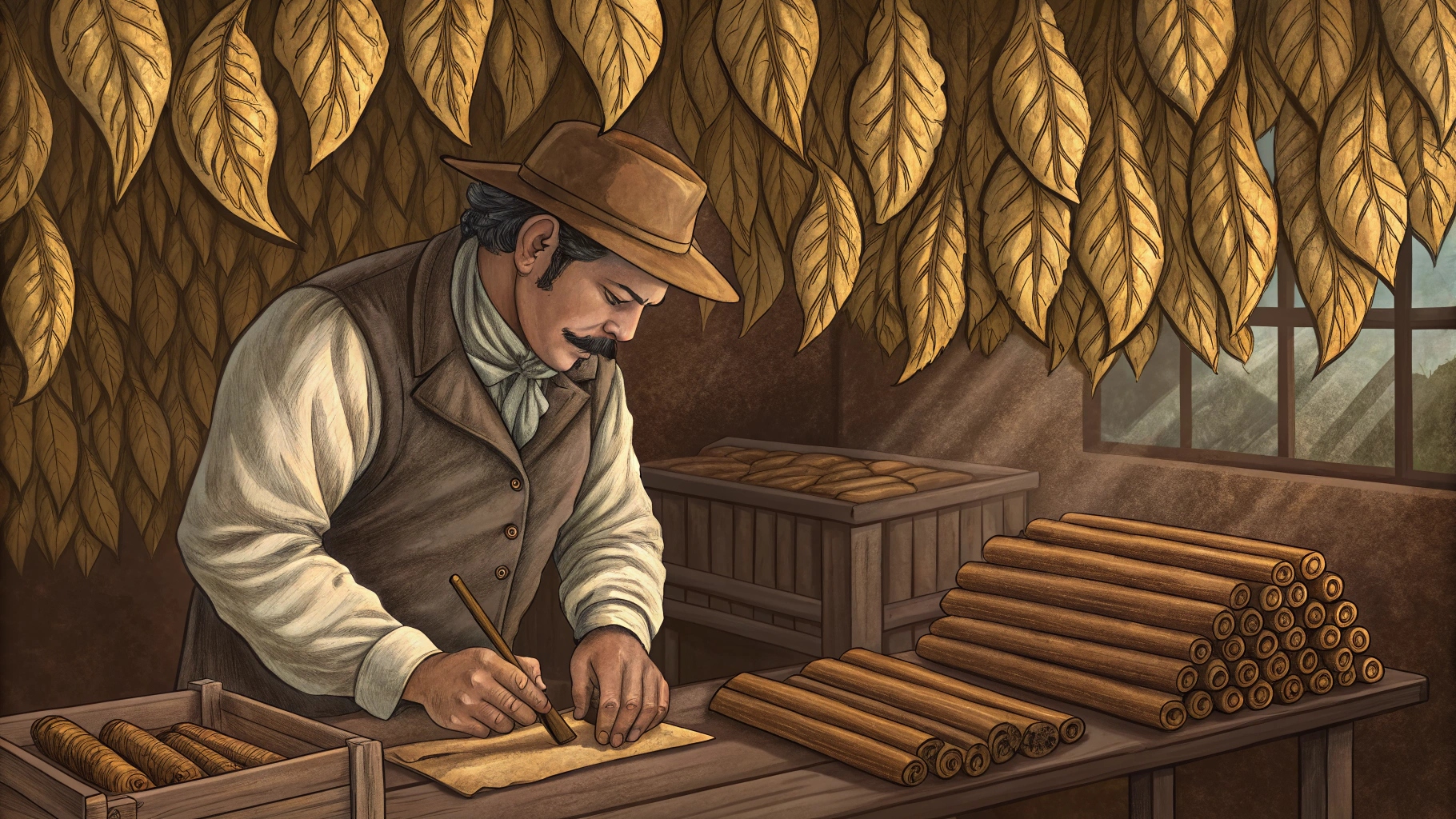Cigars are more than just rolled tobacco—they’re the product of a centuries-old craft that blends agriculture, chemistry, and artisan skill. Behind every premium cigar is a meticulous process involving specific climates, carefully aged leaves, and masterful rolling techniques. From the fields of Central America to your humidor, here’s a quick step-by-step journey through how cigars are made—and how each stage influences the final flavor and strength.
1. Growing the Tobacco: The Foundation of Flavor
The journey begins in rich, sun-drenched soils of countries renowned for cigar tobacco:
- Cuba (Vuelta Abajo)
- Dominican Republic
- Nicaragua (Estelí, Jalapa, Condega)
- Honduras
- Ecuador (particularly for wrappers)
Each region imparts a unique terroir—a combination of soil, climate, and altitude that affects the leaf’s flavor, strength, and burn characteristics.
Tobacco Types Grown:
- Ligero: Grown at the top of the plant; thick, oily, and strong in nicotine. Used in the filler for strength.
- Seco: Milder leaves from the middle of the plant; good for aroma and combustion.
- Volado: Lighter leaves from the bottom; often used to improve burn.
- Wrapper Tobacco: Often grown under cheesecloth or cloud cover to produce smooth, flawless leaves with a silky texture.
2. Harvesting and Drying (Curing)
When the tobacco leaves reach maturity, they are harvested by hand and strung onto wooden poles. These poles are hung in curing barns—large, ventilated structures where the leaves slowly dry over 30–60 days.
Curing Purpose:
- Removes moisture
- Changes leaf color from green to golden brown
- Begins the breakdown of chlorophyll
- Prepares the leaf for fermentation
Humidity and airflow are carefully managed, and leaves are periodically moved to ensure even drying.
3. Fermentation: Unlocking Flavor
Once cured, the leaves undergo fermentation, a natural chemical process that reduces harshness and draws out nuanced flavors.
How It Works:
- Leaves are stacked in large piles called pilones.
- Natural heat builds up (can reach 110°F/43°C), activating microbial breakdown.
- Ammonia and other bitter compounds are released.
- The process can last weeks to months, depending on the leaf type.
Fermentation is done multiple times, especially for strong or oily leaves like ligero. The result is a smoother, more refined tobacco that burns cleaner and tastes richer.
4. Aging the Tobacco
After fermentation, tobacco leaves are aged for 1 to 5 years (sometimes more) in bales or cedar-lined aging rooms.
Aging Benefits:
- Further mellows harshness
- Enhances complexity and smoothness
- Stabilizes moisture content
During this time, master blenders evaluate and sort the leaves by size, color, texture, and strength.
5. Stripping and Sorting
Before rolling, workers strip the central vein from the leaves (especially the binder and filler). Leaves are sorted into three major components of a cigar:
- Filler: The innermost blend of different tobacco types (ligero, seco, volado) that determine the cigar’s strength and complexity.
- Binder: A thicker, elastic leaf that holds the filler together.
- Wrapper: The outermost, most delicate leaf that provides much of the cigar’s flavor and visual appeal.
6. Blending: The Cigar’s DNA
This is where artistry meets science. Master blenders create cigar profiles by combining different tobaccos from various regions and primings (leaf positions on the plant).
Blending Goals:
- Balance flavor, strength, burn, and aroma
- Create unique smoking experiences
- Ensure consistency across batches
A typical blend may include:
- Nicaraguan ligero (for power)
- Dominican seco (for aroma)
- Ecuadorian Connecticut wrapper (for smoothness)
7. Rolling the Cigar (Torcido)
The rolling process is performed by skilled artisans called torcedores. Each cigar is constructed in three main steps:
Step 1: Filler Bunching
The selected filler leaves are bunched together in a specific order, often rolled in a spiral or accordion shape to promote airflow and an even burn.
Step 2: Binder Application
The bunch is wrapped in a binder leaf, forming a cylindrical shape. This is then pressed in a wooden mold for 30–60 minutes to standardize shape and density.
Step 3: Applying the Wrapper
The wrapper is applied with a practiced hand and a small amount of natural plant-based glue (typically gum arabic). The torcedor trims the ends and finishes the cap (often a triple-cap in Cuban tradition).
Each cigar is examined for:
- Smoothness
- Consistent construction
- Proper draw (tested using draw machines)
8. Aging (Again)
Finished cigars are typically aged in cedar-lined rooms for several weeks or months to allow the different tobacco components to “marry” and stabilize. This results in a more harmonious flavor profile.
9. Quality Control and Packaging
Cigars go through rigorous inspections for consistency in weight, draw, appearance, and aroma. They are then sorted by color (shade sorting), banded, and packaged—often in cedar boxes that help preserve humidity and enhance aging.
How Leaf Types Impact Flavor and Strength
- Ligero – Top Leaf – Bold, full-bodied strength and slower burn
- Seco – Middle Leaf – Medium body, aromatic and flavorful
- Volado – Bottom Leaf – Mild flavor, excellent combustion
- Binder – Varies – Holds the cigar together, neutral or mild flavor
- Wrapper – Outside Leaf – Up to 60% of flavor and aroma; smooth or oily texture
The blend and origin of each tobacco type are what define a cigar’s flavor notes—earthy, spicy, creamy, sweet, nutty, or peppery.
Cigar making is a labor-intensive process that blends agricultural tradition with artisanal precision. Every puff is the result of years of care, from planting the seed to the final roll. Understanding this process not only deepens your appreciation for cigars—it helps you find the styles and profiles that best suit your palate. Whether you’re a seasoned aficionado or a curious newcomer, knowing what’s behind the band adds a whole new layer to the experience.
